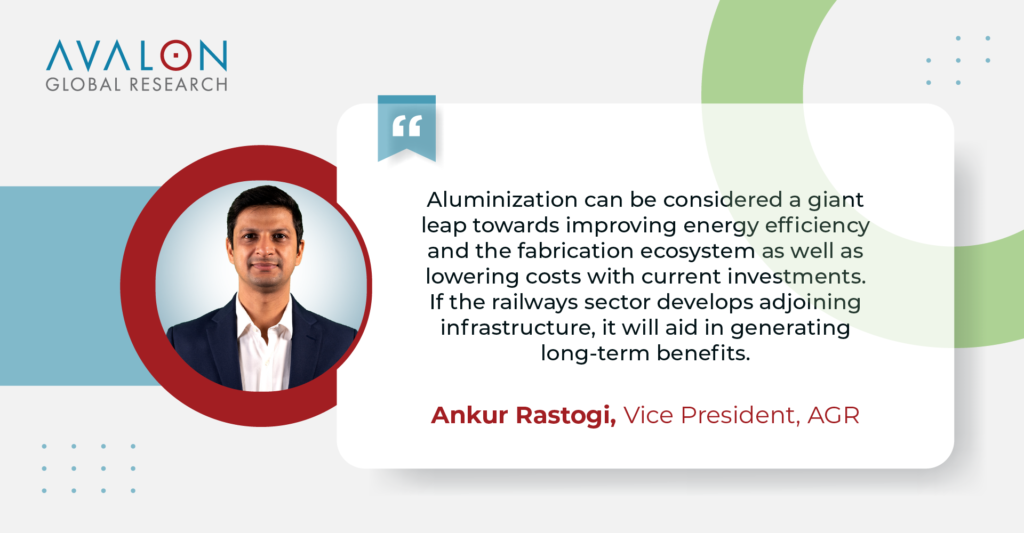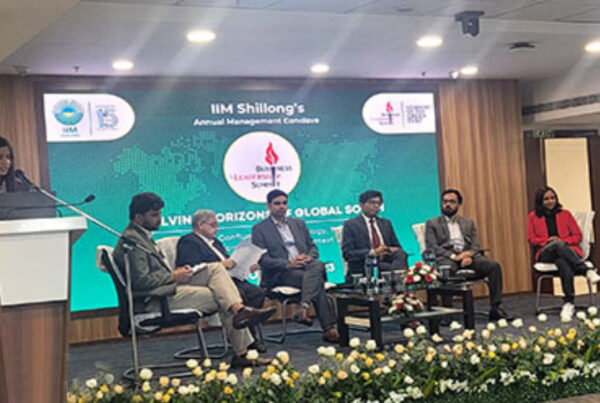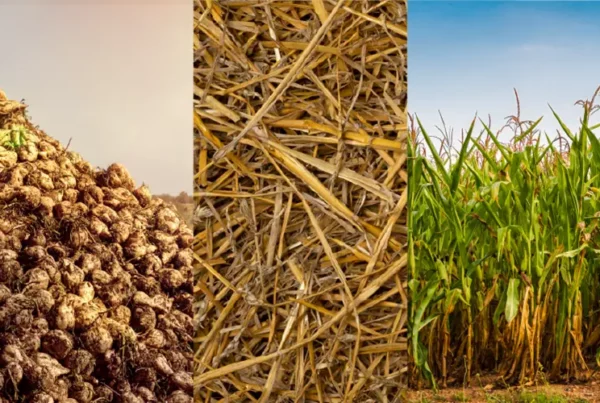Vande Bharat aluminium trains: At 200 kmph
Ankur Rastogi, VP, AGR, believes aluminization can be considered a giant leap towards improving energy efficiency and the fabrication ecosystem as well as lowering costs with current investments. If the railway’s sector develops adjoining infrastructure, it will aid in generating long-term benefits. Use of aluminum in Vande Bharat trains can also boost its penetration across premium long-distance trains such as Rajdhani and Duranto, among others.
There has been considerable discussion on the aluminization of trains with the recent contract for 200 Vande Bharat trains awarded to the JV between Russia’s Transmashholdings (TMH) and Rail Vikas Nigam (RVNL). However, the impact of aluminization needs to be evaluated from various angles.
- Energy efficiency – This is probably the most important among all factors. Due to a lower weight-to-strength ratio, aluminum will reduce the coach’s shell weight and enhance energy efficiency.
- Long life – Aluminum coaches are expected to have a life of 40 years vis-à-vis 35 years for stainless steel. Also, aluminum provides better aesthetics than steel. Nevertheless, we need to see if these factors hold true in the Indian context.
- Swifter trains – It is interesting to note that aluminum coaches provide better acceleration and de-acceleration as they are lower in weight, and thereby, slightly increase the average speed of trains. Conversely, this is insignificant for trains with fewer stops (and less instances of speed change). The bigger challenge is to expand adjoining infrastructure to intensify speed, i.e., to achieve the target of 200 kmph.
- Coming to metro trains/MRT and local trains, lower-weight coaches can boost revenue and improve crowd management, especially in a country like ours with increasing urban population and the ensuing need for trains with better frequency. Higher acceleration and de-acceleration can increase turnaround times at a station.

- Manufacturing cost – The cost of manufacturing aluminum coaches is, no doubt, higher owing to superior pricing of raw materials as well as requirement of greater investment in specialized machineries and dies for long extruded components. Moreover, maintenance will be an expensive factor due to the availability of downstream fabrication and repair units.
- Availing raw materials – Stainless steel used to manufacture coaches is produced within the country. In fact, majority of the large steel plants are undertaking supplies to Indian Railways. Hindalco develops high-strength aluminum alloy plates and extrusions at the Hirakud (Odisha) and Renukoot (UP) plants. Hence, availability is not a cause for concern.
- On the downside, aluminum coaches are unlikely to drive revenue for railways as the cost cannot be passed on to passengers. Such coaches may or may not have additional seats compared to the existing stainless-steel ones. However, OPEX will decrease due to lower electricity consumption.
- Export potential for Indian Railways – This prospect needs to be evaluated carefully since manufacturing of aluminum coaches is expensive. Therefore, low-income or less developed countries are unlikely to evince much interest. Among developed regions/countries, such as the EU and Japan, regional players have a strong foothold and, thus, may be reluctant to consider Indian-made coaches.
- With the advent of a manufacturing ecosystem in the long run, global companies, like Alstom, Siemens, Stadler and TMH, may consider India as their manufacturing hub. Besides, it could be an opportunity to supply aluminum alloys to international players.
Indeed, aluminization of railways is something to look forward to!




